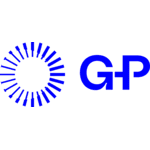Imagine a world where companies can save time and eliminate the vast financial losses and inefficiencies associated with employee time theft.
Even inadvertent loss of productive time due to clock-in discrepancies, human error, and poor time management strategies play a significant role in profitability. Today’s software vendors offer real-time, user-friendly solutions that promise to address and rectify these challenges. The answer lies in the adoption of a cloud-based time and attendance system. These systems offer strategic imperatives by managing and monitoring both the time employees spend working, and the effectiveness of their working hours.
By understanding the benefits of time and attendance systems discussed in this article, you can see how these tools streamline operations, ensure compliance, and foster a culture of honesty.
11 Benefits of Using Time and Attendance Software
Attendance tracking can offer managers a clear picture of their team's work hours, helping them to use automated systems to make better staffing decisions to optimize productivity. By effectively leveraging time and attendance system features, data and insights, businesses can save time and resources.
These systems have evolved to offer far more than just tracking time and attendance. They have become a vital tool that has the potential to provide numerous advantages, such as:
1. Increased Productivity of the HR Team
Manually keying in payroll data or timesheets can be both time-consuming and error-prone. The American Payroll Association reports that 30% of businesses outsourcing HR find these tasks among their most burdensome.
When you integrate automated time solutions, your human resources team is liberated from these mundane tasks, allowing them to channel their expertise into strategy formulation and process innovation. This evolution in workflow could potentially culminate in accelerated company growth and a more satisfied HR team.
2. Improved Compliance
Navigating the quagmire of ever-shifting employment regulations can be daunting. Clock-in and punch-in errors can trigger significant financial repercussions and tarnish your company's reputation.
Time and attendance systems proactively update themselves, safeguarding your business from such pitfalls. This not only ensures peace of mind but also saves potential costs linked with non-compliance.
3. Insightful Analytics
Armed with intricate reports on employee hours, attendance patterns, tardiness, overtime, and absences, your managerial teams can craft more informed strategies. For instance, if analytics point to consistent overtime in a particular department, this insight can drive recruitment to balance workloads.
Besides workforce planning, this proactive approach can improve employee retention, as workers don’t feel overwhelmed or underutilized.

4. Improved Employee Morale
Transparent systems ensure employees feel valued and fairly treated. When employees trust that their hours are being accurately recorded and compensated, they're more likely to be engaged and committed, reducing turnover rates and recruitment costs for the company.
5. Cost Savings
A recent study reveals a startling statistic: 49% of U.S. employees and 62% of Canadian employees who track time admit to time theft. This unethical practice, often resulting from traditional time cards, costs U.S. business owners a staggering amount— more than $11 billion annually.
Inaccuracies like buddy punching can lead to significant labor costs over time. Implementing an advanced system eliminates such inaccuracies, thereby directly boosting the company’s bottom line.
6. Efficient Management of Remote Employees
The rise in distance work has introduced new challenges in remote time tracking. With 82% of U.S. employees preferring remote work, as per Global Workplace Analytics, time and attendance solutions now come equipped with tools and mobile apps specifically designed for remote workforce management.
7. Improved Accuracy
One of the significant benefits of implementing time and attendance systems is the improvement of accuracy in record-keeping.
Manual time-keeping methods can lead to errors, misunderstandings, and even intentional fraud. For businesses, this accuracy ensures there’s no overcompensation or undercompensation, minimizing payroll errors, leading to fair pay for work, and cutting down disputes or potential legal challenges.

8. Reduced Absenteeism
As highlighted by a study from Circadian, unscheduled absenteeism can cost approximately $3,600 per year for each hourly worker, and $2,650 each year for salaried employees. The analytics provided by tracking software can help managers identify employee attendance patterns. By addressing these patterns proactively, businesses can save thousands of dollars annually.
9. Simplified Payroll Processing
The best time and attendance systems integrate seamlessly with payroll systems. This reduces errors and makes the payroll process more efficient.
For HR professionals, this integration means quicker payroll processing, reduced disputes, and more time for other critical tasks. By utilizing a web-based solution, these systems can be accessed anywhere, providing additional convenience for them.
10. Environmentally Friendly
Time and attendance systems are digital, meaning businesses can reduce their time cards and paper consumption. This not only results in cost savings but also boosts a company’s green credentials, an increasingly important factor for modern consumers and potential employees.
11. Enhanced Security
With self-service features like biometric scanning, these systems can ensure that only authorized personnel access certain areas of a workplace, providing an added layer of security and protection for business assets.
Time and attendance systems aren’t just about tracking hours; they’re comprehensive tools that offer businesses a myriad of benefits. From cost savings to improved morale, the return on investment for such systems is clear. As businesses continue to evolve, those that leverage these advanced systems will undoubtedly be better positioned for success.
Overcoming Implementation and Buy-in Challenges by Showcasing Benefits
Implementing a new system often comes with its own set of challenges. Resistance from leadership and employees alike can be due to longstanding familiarity with manual timekeeping processes, or a lack of familiarity with cloud-based systems.
Recognizing and understanding these challenges can help businesses to navigate them more efficiently. Push-back can be countered by clearly demonstrating the benefits of implementing a time and attendance solution.
Resistance to Change
Employees often resist changes, fearing added complexity to their routine or concerned about monitoring.
Overcoming Strategy: Prioritize employee training sessions and open forums where they can voice concerns and have questions answered. Emphasizing the system's benefits, such as ensuring accurate pay and fostering a fair workplace, can also help in winning them over.
Technical Glitches
Like any software, time and attendance systems can sometimes have technical hitches or compatibility issues. This can lead to distrust of the system’s effectiveness.
Overcoming Strategy: Work closely with the software vendor during the integration phase. Ensure that there is robust after-sales support. Periodically review and update the system to ensure smooth operation. The smoother your implementation runs, the higher the rate of adoption you can expect.
Data Security Concerns
Storing employee data digitally can raise concerns about data breaches or misuse.
Overcoming Strategy: Opt for systems that prioritize data encryption and cybersecurity. Regularly update security protocols and educate staff on best practices. Make a point of communicating the security benefits of the systems (as opposed to paper-based systems) to your team.
Initial Financial Outlay
Investing in a robust system can be costly initially. This may prevent buy-in from leadership and other stakeholders who have to sign off on the purchase.
Overcoming Strategy: Focus on the long-term ROI the system promises in terms of efficiency, reduced errors, and improved compliance. Sometimes, going for a phased integration can spread out costs.
Integration with Existing Systems
New systems might not easily mesh with a company's existing software.
Overcoming Strategy: A major benefit of most cloud-based time and attendance solutions is their ability to integrate with other HR software and seamlessly share data. This can be via a native integration or an API hookup.
Look for time and attendance systems that offer compatibility with a range of other software or platforms. Working with the IT department and the vendor can also help find workarounds and solutions.
To harness the full potential of the best time and attendance systems, businesses must approach the implementation process with foresight. By anticipating challenges and strategizing their solutions, companies can seamlessly merge these systems into their operations, ensuring a smooth transition phase and maximizing the system's extensive benefits.

Is a Time and Attendance System Right for Your Company?
No doubt, the benefits we’ve discussed so far sound convincing, but they may not all apply to your company. As technology advances and the variety of systems available expands, you might find yourself questioning: Is a time and attendance system the right thing for you?
Let's delve into some key considerations::
Company Size and Needs
For small businesses, an efficient system can drastically reduce administrative overhead, giving you more time to focus on growing your venture.
Larger corporations, on the other hand, can utilize advanced features like integration with other HR systems, detailed reporting, and analytics to streamline operations and ensure compliance across various departments.
Relevant Benefits
- Reduced time spent on manual attendance and payroll tasks.
- Increased time to focus on growing your venture.
Industry Type
Different industries have unique requirements. In sectors like manufacturing where shifts can be long, varied, and sometimes round-the-clock, a robust system ensures accurate compensation and adherence to labor laws.
The service industry, especially those with multiple service points like restaurants or retail chains, can leverage such systems for smooth shift rotations and managing peak hours.
Relevant Benefits
- A streamlined solution to managing varied and potentially round-the-clock shifts.
Budget Considerations
There's no denying that setting up a time and attendance system requires an initial investment. However, consider the countless hours saved on manual payroll calculations, reduced errors, and potential legal compliance issues.
These savings, both tangible and intangible, can quickly surpass the initial setup costs.
Relevant Benefits
- Drastic reductions in financial loss due to payroll errors or overpayments.
Remote Workforce
The modern workforce is increasingly remote, and managing attendance for such a team has its own set of challenges.
Relevant Benefits
- Ability to track the productivity of employees working in different locations or time zones.
- Automatically tracking their hours and ensuring accuracy in compensation.
Future Scalability
Modern systems are designed with scalability in mind, ensuring that as your employee count rises, or as you open new branches, you won't need to reinvent the wheel. Opting for a system that is flexible ensures that your investment today continues to serve you effectively tomorrow.
Relevant Benefits
- A solution that can grow with your business.
- Consistency in time and attendance tracking so that, as you grow, it is not a factor that requires retraining or reimplementation.
Conclusion
The manifold benefits of modern time and attendance systems cannot be overstated. From bolstering accuracy and enhancing productivity to providing cost-efficiencies and scalability, these systems are a linchpin in optimizing business operations.
If you're still reliant on outdated or manual methods, it's high time to evaluate your current approach. Adopting a contemporary time and attendance system could be the pivotal step that propels your business towards streamlined operations and sustained growth.



























